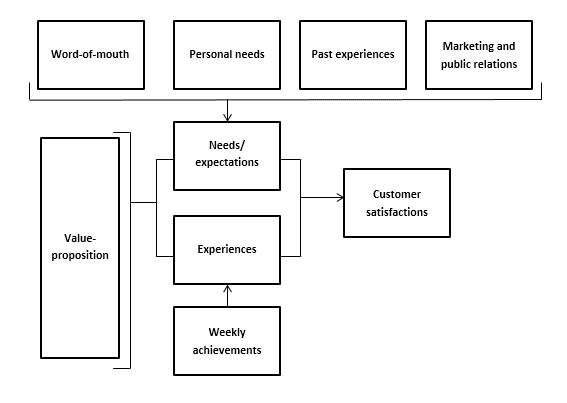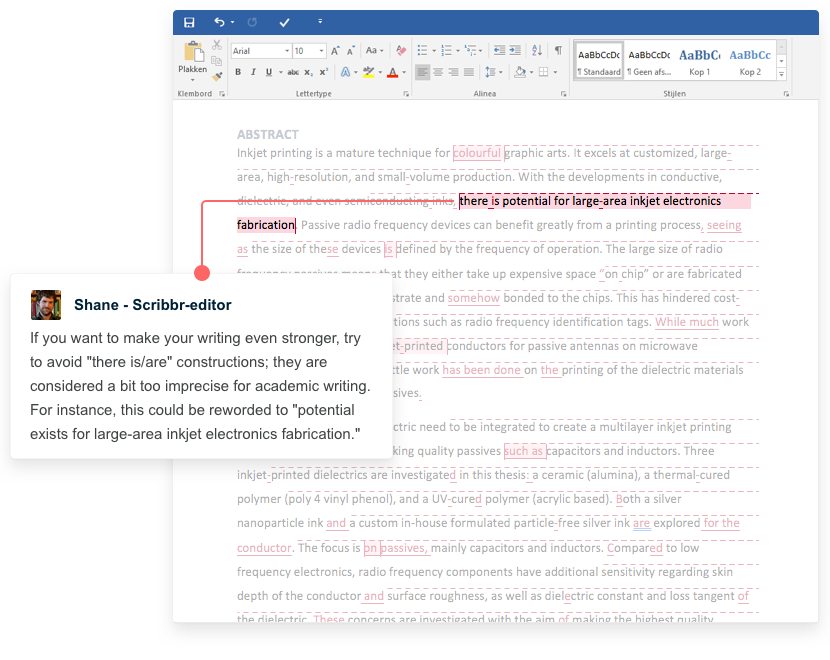Theoretical Framework Example for a Thesis or Dissertation
Your theoretical framework defines the key concepts in your research, suggests relationships between them, and discusses relevant theories based on your literature review.
A strong theoretical framework gives your research direction, allowing you to convincingly interpret, explain, and generalize from your findings.
Sample problem statement and research questions
Your theoretical framework is based on:
- Your problem statement
- Your research questions
- Your literature review
A new boutique downtown is struggling with the fact that many of their online customers do not return to make subsequent purchases. This is a big issue for the otherwise fast-growing store.Management wants to increase customer loyalty. They believe that improved customer satisfaction will play a major role in achieving their goal of increased return customers.
To investigate this problem, you have zeroed in on the following problem statement, objective, and research questions:
- Problem: Many online customers do not return to make subsequent purchases.
- Objective: To increase the quantity of return customers.
- Research question: How can the satisfaction of the boutique’s online customers be improved in order to increase the quantity of return customers?
The concepts of “customer loyalty” and “customer satisfaction” are clearly central to this study, along with their relationship to the likelihood that a customer will return. Your theoretical framework should define these concepts and discuss theories about the relationship between these variables.
Some sub-questions could include:
- What is the relationship between customer loyalty and customer satisfaction?
- How satisfied and loyal are the boutique’s online customers currently?
- What factors affect the satisfaction and loyalty of the boutique’s online customers?
As the concepts of “loyalty” and “customer satisfaction” play a major role in the investigation and will later be measured, they are essential concepts to define within your theoretical framework.
Sample theoretical framework
Below is a simplified example showing how you can describe and compare theories in your thesis or dissertation. In this example, we focus on the concept of customer satisfaction introduced above.
Customer satisfaction
Thomassen (2003, p. 69) defines customer satisfaction as “the perception of the customer as a result of consciously or unconsciously comparing their experiences with their expectations.” Kotler & Keller (2008, p. 80) build on this definition, stating that customer satisfaction is determined by “the degree to which someone is happy or disappointed with the observed performance of a product in relation to his or her expectations.”
Performance that is below expectations leads to a dissatisfied customer, while performance that satisfies expectations produces satisfied customers (Kotler & Keller, 2003, p. 80).
The definition of Zeithaml and Bitner (2003, p. 86) is slightly different from that of Thomassen. They posit that “satisfaction is the consumer fulfillment response. It is a judgement that a product or service feature, or the product of service itself, provides a pleasurable level of consumption-related fulfillment.” Zeithaml and Bitner’s emphasis is thus on obtaining a certain satisfaction in relation to purchasing.
Thomassen’s definition is the most relevant to the aims of this study, given the emphasis it places on unconscious perception. Although Zeithaml and Bitner, like Thomassen, say that customer satisfaction is a reaction to the experience gained, there is no distinction between conscious and unconscious comparisons in their definition.
The boutique claims in its mission statement that it wants to sell not only a product, but also a feeling. As a result, unconscious comparison will play an important role in the satisfaction of its customers. Thomassen’s definition is therefore more relevant.
Thomassen’s Customer Satisfaction Model
According to Thomassen, both the so-called “value proposition” and other influences have an impact on final customer satisfaction. In his satisfaction model (Fig. 1), Thomassen shows that word-of-mouth, personal needs, past experiences, and marketing and public relations determine customers’ needs and expectations.
These factors are compared to their experiences, with the interplay between expectations and experiences determining a customer’s satisfaction level. Thomassen’s model is important for this study as it allows us to determine both the extent to which the boutique’s customers are satisfied, as well as where improvements can be made.
Figure 1
Customer satisfaction creation
Of course, you could analyze the concepts more thoroughly and compare additional definitions to each other. You could also discuss the theories and ideas of key authors in greater detail and provide several models to illustrate different concepts.
Your theoretical framework
Sources in this article
We strongly encourage students to use sources in their work. You can cite our article (APA Style) or take a deep dive into the articles below.
This Scribbr articleVinz, S. (October 10, 2022). Theoretical Framework Example for a Thesis or Dissertation. Scribbr. Retrieved October 20, 2022, from https://www.scribbr.com/dissertation/theoretical-framework-example/

